I get questions fairly often asking if I provide a certificate of authenticity with the items I sell.
I don’t, and its largely due to a personal belief that the majority of the time they aren’t worth having.
In the assorted mineral, crystal, fossil, and gemstone industries I would arguably fit into, there are several types of certification for authenticity of products.
The two main common types are ‘self signed’, and those signed by an external body, which I’ll refer to as ‘external’.
Self signed certificates are issued by the business themselves, and are typically a piece of paper or card with a message saying “we guarantee these are genuine minerals, crystals, fossils, etc”. This would be the type of certification I’d have to offer; and I don’t think it really adds any value to the pieces. Realistically, most of these would end up straight in the recycling.
The other type, external certificates, are more reliable, but far from perfect. My business, Albion Fire and Ice, covers a pretty wide range of items. I supply minerals and fossils to their respective collectors, I supply gemstones to jewellers.
There are several museums that do offer consulting services to identify items; I have never enquired about these services as I don’t think I sell a single item as expensive as they would charge for a single consultation. If I was to sell a t-rex skull or a diamond the size of my fist – yes, I’d be getting in touch.
While museum accreditation is well recognised, I do not believe there are any industry wide accreditations for single specimens of minerals or fossils – happy to be corrected though!
Gemstones are a slightly different matter, and are the real subject of this post. There are accredited centres around the world dedicated to the certification of gemstones. The most well known of these is likely to be the GIA, the Gemological Institute of America – however, there are dozens, if not hundreds of other labs. Real certifications are an excellent investment for high quality gemstones, but I’m talking three figures plus.
The issue is some of the smaller labs – if they are, in fact, actually labs at all!
However, many small labs are perfectly credible. We cannot tar them all with the same brush.
However, they are not all legit.
I’ve chosen a particularly egregious fake for the example in this post, but it does show the level of sophistication of these scams quite well.
The first thing to note is that the ‘dodgy’ labs tend to use a name similar to other labs, possibly to confuse consumers. That said, most labs are known by three initials, so some overlap and similarity is always going to happen.
The certification on the clearly fake specimen below is from “AGI Labs”, also referred to as the “ASIAN GEMOLOGICAL INSTITUTE”.
This is likely another confusion tactic, as there are so many organisations with similar names it can be difficult to research an organisation.
If we simply search for “AGI gemology”, Google will bring up several other similar named organisations, including:
- Accredited Gemological Institute of New York City (AGI)
- Antwerp International Gemological Laboratories (AIG)
- Antwerpse Gemologische Instelling (AGI)
- Asian Institute of Gemological Sciences (AIGS)
- AGI Laboratories (AGI)
- American Gemological Institute Laboratory (AGIL)
For a consumer, this could be quite confusing; perhaps even quite convincing.
“If they’re using the AGI name they must be legit – I couldn’t start a business called Nike!”
Anyway. On with the tale.
I found a particularly hilarious looking “Watermelon Tourmaline” on eBay. 84.05 carats, and I scored it for the bargain price of only 1.29USD.
The seller had 4237 feedback, with 95.6% positive, a member since 2017 and an eBay top-rated seller. I was definitely in for a bargain here. It comes with a certificate and everything, so I’m pretty confident I’m quids in.
When it arrived, I was stunned by the sheer beauty of the fine gem I’d purchased. Or, rather, just how bad it was. Not too long after taking the photographs, it disappeared somewhere never to be seen again – it might have been the bin.
However, it was interesting. It was made of two conjoined pieces of glass, with an obvious void inbetween them where the glue hadn’t quite evenly joined them. One half of the glass had been broken before gluing them together, which I found extra funny. Talk about minimum effort.
The thing was, though, it wasn’t the ‘gemstone Tourmaline’ that was interesting. Obviously.
When it said it came with a certificate, I was expecting the equivalent of a piece of paper that said “lol this is tourmaline”.
Instead, I got a printed plastic card with a photo of the actual piece, measurements and weight of the actual piece, and characteristics which would actually match Tourmaline.
On the card, the logo is a blue diamond with the letters AGI – which a Google search reveals is the actual logo of the Accredited Gemological Institute of New York City (AGI) I mentioned above.
The card bears a few names – AGI Labs, AGI Laboratories, and the web address agilabsindia.com – which as of 12/08/2021 was a valid and surprisingly decent website. It lists several locations around Asia, presumably implying multiple labs.
The rear of the card runs through a fairly standard set of appraisal terms and conditions and gives us an email address to contact them. Obviously, I have emailed them some bait.
The website is probably the thing that impressed me most. It loaded very quickly, which gives it an air of professionalism – I’m in the UK and they’re in Asia, typically there is a 5-10 second delay, which may make some people think they’ve invested in website infrastructure.
The website itself isn’t terribly written, and is very simple and clear, the most prominent button is one to check your certificate. When you do, it ‘verifies’ it by displaying a copy of the certificate on the screen.
Presumably, this means that they are storing all of the characteristics – shapes, sizes, etc in a database, and generating the certificate when the ‘number’ L140 is entered. It would be interesting to see the database.
I can definitely see people being tricked by this – well, not the one I bought, but a higher quality piece with an online ‘verifiable’ certificate?
Sure. I’ve seen worse.

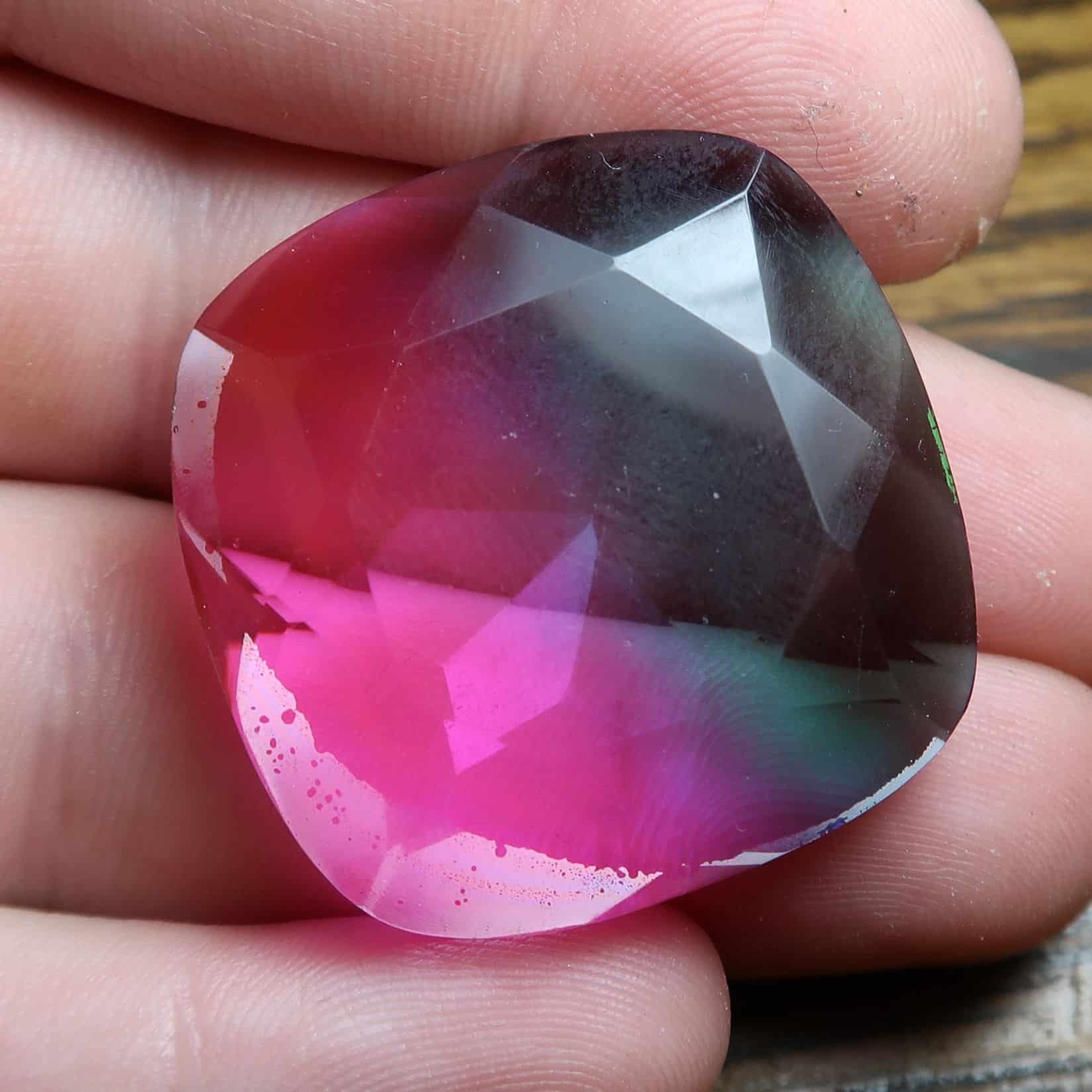
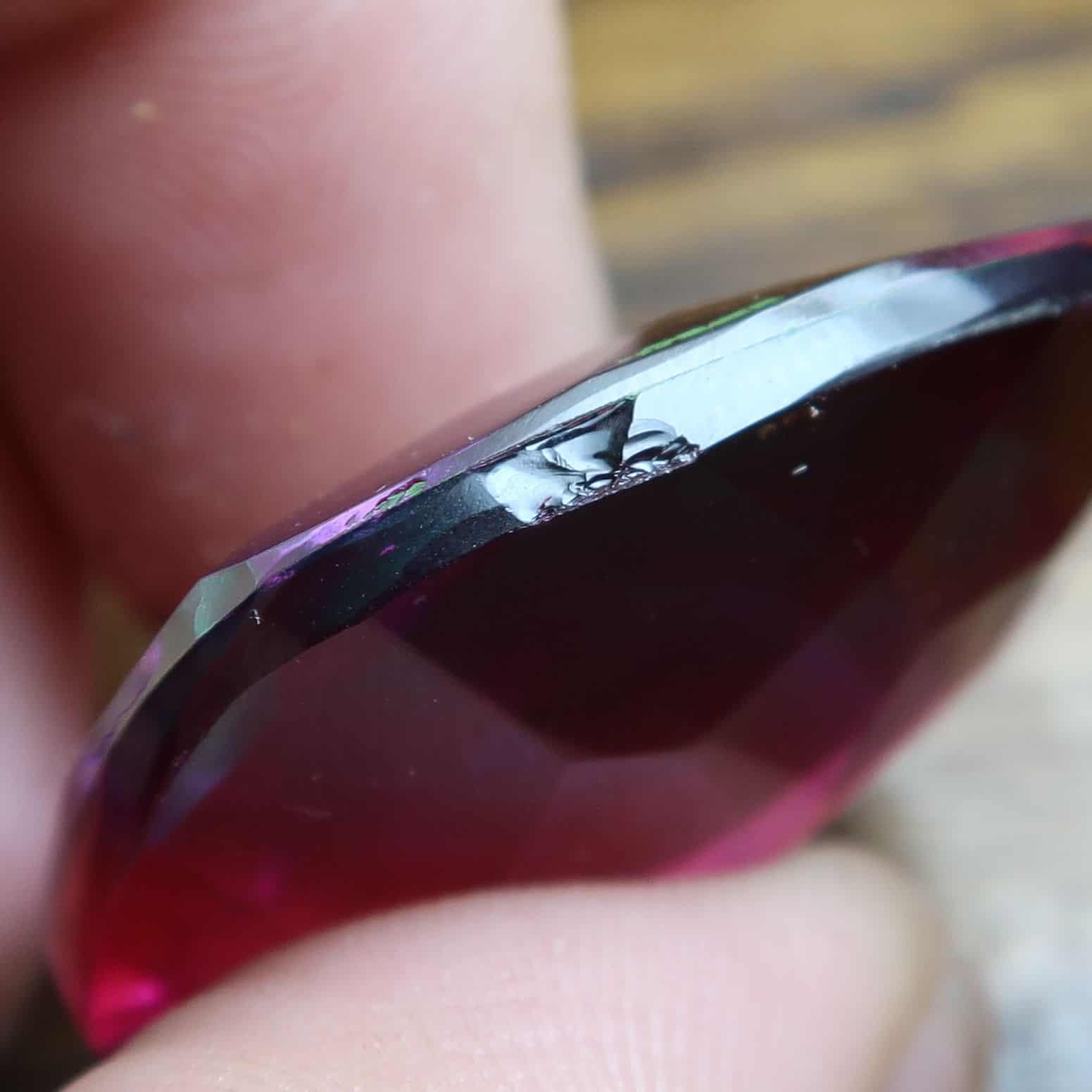
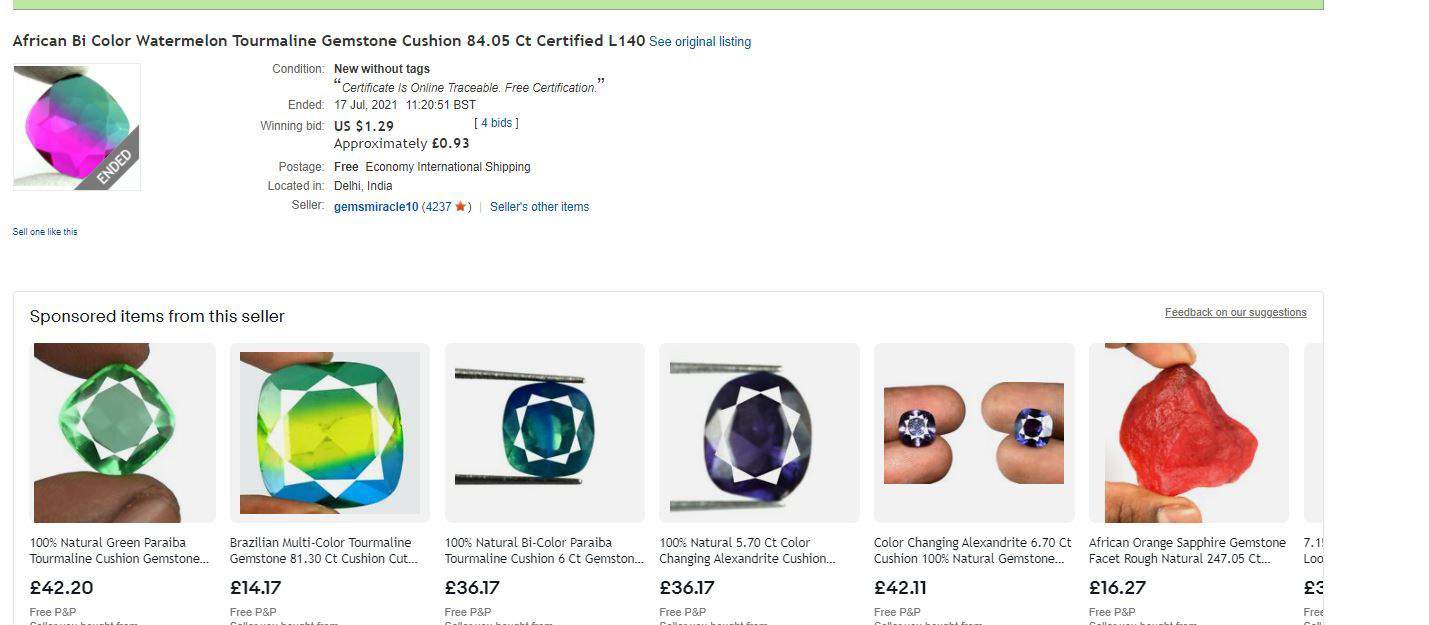
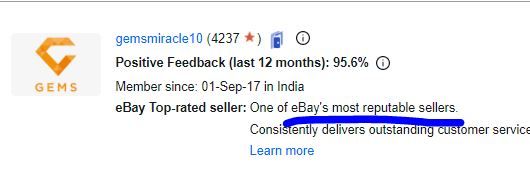
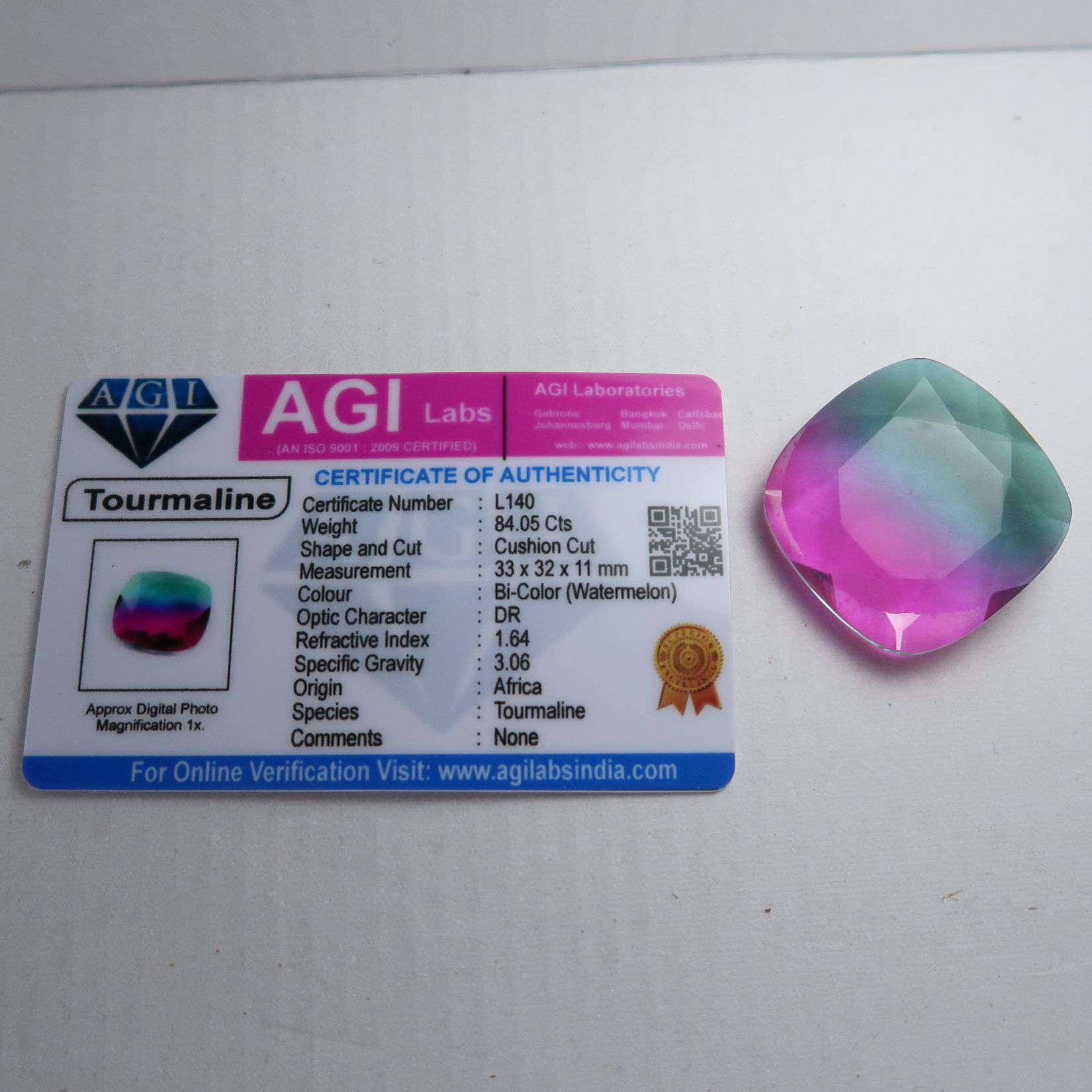
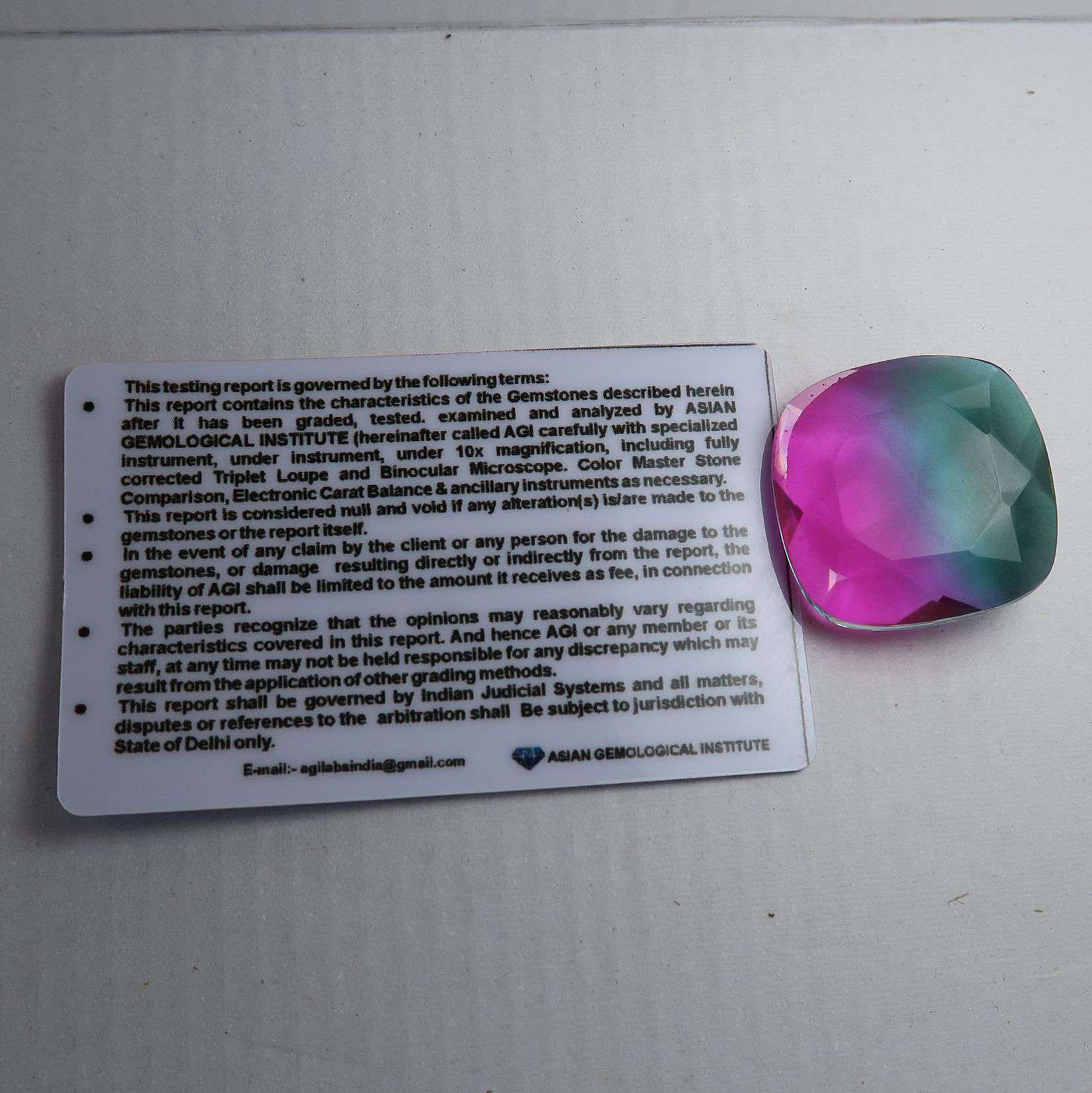
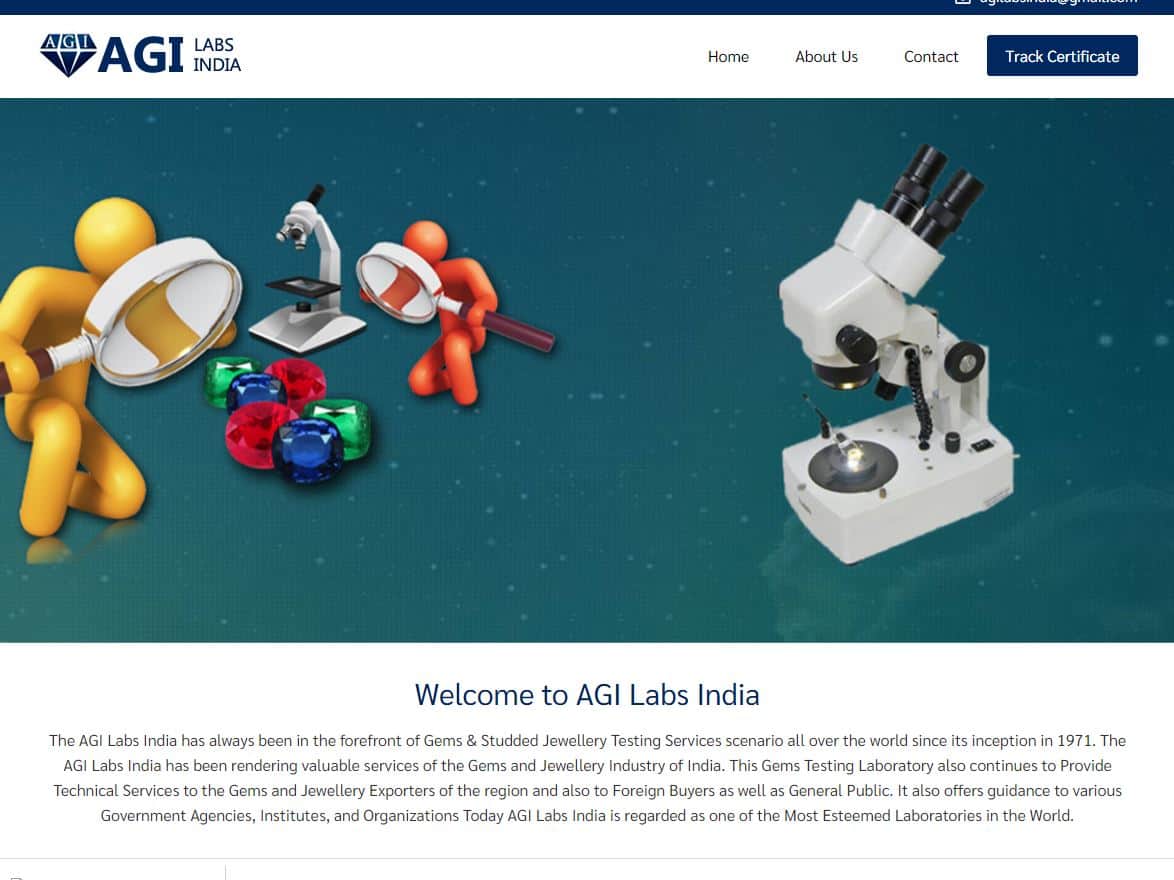
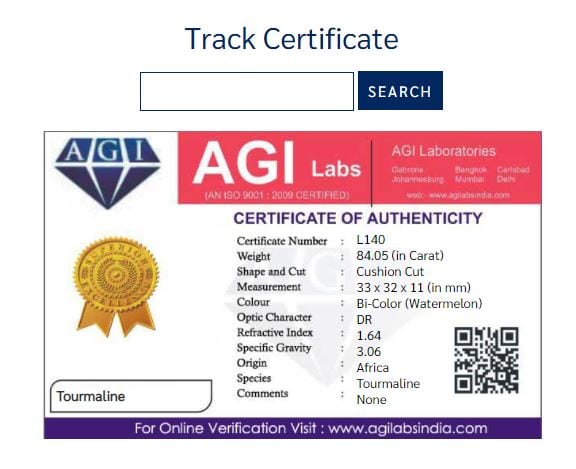
Thank you for this very informative article. I bought a gem via a well known buying platform , not an auction site.Exactly as shown with card from AGIlabsindia and a certificate number which when entered brought up the ”Gem” purchased. Item so obviously fake I thought at first it was plastic.
Thanks again . Wish I had seen this a few weeks ago.
Me too. Several ” earth mined ” diamonds. They all look great, but who knows if they are real now that I read this. Their is certain eye tests that they seem to pass and I took a white diamond to a diamond buyer who acknowledged that it was real but it showed blue florescence so he would not buy it because he said it was a colored diamond even though the cert. Was a white diamond. They were auctions and they were cheap. But the money added up. Glad I know what I know now.
If you’re in the UK I can recommend some diamond appraisers who would be able to let you know for sure. I’m afraid they’re not really my area – but I would expect there to be some fake certificates floating around as well.
Lol natural diamonds can and do fluoresce. Synthetic ones can too
I bought a diamond that came with a American Gemological Institute Laboratory. Is this a legit. Appraisal company.
I wouldn’t want to say for sure – I would recommend getting in touch with the GIA OR GEM-A. I have seen fake certificates using the AGI name.
Bought a so called Ceylon blue sapphire and it came with a certificate of authenticity by AGI. It was said to be a genuine natural blue 7.7 ct Ceylon sapphire. It was perfect and totally flawless. In Sri Lanka this stone would have achieved a price of $5000-$10000 so imagine how happy I was to pay only $1.57. It was a lovely piece of glass. Don’t be fooled by these outlandish claims of genuine natural gemstones. The internet is full of them. 3 things to look for and be carful of. 1: Asian gem dealers. 2: Gemstone material said to be natural, earth mined and not lab created. 3: Gemstone material said to be not heated or treated.
very informative. i woud like translate it and post on my website with credits to you.
thank you
Hello I’ve purchased several “diamond “ rings from eBay and I don’t think they are real. I received the EXACT same plastic cards of authenticity. How do we fix this problem with these scammers ??
Unfortunately, I don’t think there’s much to be done other than public education. A fake lab can be setup with little more than a card printing machine sadly.
Did you buy them from eBay?
Hello!! I am having this very same problem atm with some clients. I am a jeweler and the couple brought me multiple gold items to repair, and finally showed me this ring. Might I add it wasn’t even silver, they wanted to size it down from a 9 to a 7 and we did and as soon as we did the stone cracked. They came back furious with their “certificate” claiming we had destroyed their ring “5.86 ct pear diamond” due to our neglect, when they didn’t even complain about the other Jewelry we fixed for them. We offered a solution to replace the stone for them, but they want to make this a bigger problem it seems like… I’ll keep you updated!
Is it safe to buy jewelry on E-Bay?
It’s not necessarily unsafe, but it isn’t definitely safe either. If you’re in a country with a hallmarking scheme, thats a good place to start; and something being stamped “925” doesn’t mean its silver anymore!
i recently received a “pink tourmaline” i bought from ebay, and i think i was duped. it’s set in “14K white gold”—and stamped as such—but looks and feels more like a shiny coating on some raggedy alloy metal, especially from the backside. (Read: i agree with another comment that says stamping doesn’t mean anything anymore [usually].)
the stone itself though, is harder to prove. since it’s a cut stone i don’t want to do a scratch test. i tried shining artificial light on it to look for color change, but not sure how obvious a change i’m looking for. can anyone give me another suggestion other than seeking out a gemologist?
i’ve got lots of experience/background with the mineral world, and i’m keenly aware of the IMMENSE problem of a market over-saturated with fakes. (Read: the commenter above who listed three things to look out for, was correct about specific wording in postings being a dead give-away [most of the time, but not always]. Also, one of my favorite all time ‘crystal guys’ was someone in China over ebay; it just depends who you find, and how well you trust your own awareness and discerning senses.)
the purchase i just made was not one of the examples above; it had none of the usual flags. any tips would be greatly appreciated! ☺️
If you’re in the UK that should be fully hallmarked, with heavy penalties if it isn’t.
no, i’m in the US. ?
when you say “fully hallmarked” what do you mean?
the “white gold” has an almost illegible, smaller than usual 14k stamp, but that’s all. and i’m thinking it was faked.
but the “tourmaline” is another story! too bad i can’t attach a picture
Ah, here in the UK we have a scheme that guarantees quality of metals and it is illegal to sell it if it isn’t stamped with numerous markings.
I’m afraid these fake certificate scams get even worse. As Albion said, the websites look quite professional. However, when You try and “track a certified gem, You will be asked to enter Your full name, e-mail and phone number to “track” the gem stone. These scamming “gem certification” websites are stealing people’s identities. All a Hacker needs is Your email & phone number to access Your Facebook, WhatsApp etc on Your mobile/cell phone. These Scammers Will be working with the “gem” sellers on eBay etc, meaning they also,very likely have Your home address. Your name, email, phone number, are All it takes for an average Hacked to steal Your identity. Add in Your home address and these Scammers have All they need to sell Your information on the dark net. I’m almost certain that’s how these eBay gem sellers can afford to cut and polish whatever fake gems their sellin. The Real “business” is not the Gems..it’s people’s Identities and real financial savings, credit etc etc that is funding these eBay gem sellers
Most of these Sellers work together, and are located in India. Unfortunately, India is known for their very adept Hacker’s & elaborate scams..this “cheap gem market” is the gateway to their Real prize-: Identity theft!!!
Always use a VPN, a Great anti virus & Scam/Phishing web page blocker, on Your mobile devices, as well as any home computer’s, laptops etc etc. Even then, if You insert Your Name, email & phone details into these scam “gem certification” pages, Hacker’s can Still get through most firewalls/anti virus tech.
I have no idea why people are not being warned about these huge £$€¥ making “gem” scams. I bought my first loose “gem” 2 week’s ago and My what’s app & Facebook have already been hacked!!! And I’m Fairly tech savvy!¡ I feel awful for all the poor Folk that have little, to no, tech experience!!!.
I’ll be changing my number, factory resetting my phone, and making a new email very soon. I’ve already informed My bank etc- This is the only option open to You, if You’ve been hacked- You’ll lose photos, files, music, apps etc… But, it’s All You can do to keep your identity safe (again!) I just wanted to get this “gem scam” information out there before I take these actions!
Best Wishes & kindest Regards to You all
My (fake) ruby purchased on eBay is including here. The AGI plastic driver license was another deception. As the above article indicates verified by my own research.
There is a silver round being sold as Aztec Calendar 1Troy Ounce fine silver. They are fraudulent. Beware the ones shipped for middle east and Asia/China. Some are even non-ferrous. As with gems, only buy from US company. Bullion exchange or mint works for me. the Prices are the same as the eBay or Etsy sellers
The option to submit is saying that this is detected as a duplicate reply
I guarantee I have never replied at this site. this too is how egregious AI has become. I added this in an attempt to get my reply similar to some one else’s to post?✌️
You commented five minutes before this comment.. there’s no form of AI used on this website at all and moderated comments sections to remove any that robots try to post (which is why your first comment didn’t post automatically, it needed to be approved).
You are very naive or pretend to attract attention. Look at the price you Moron. I study gems for 6 years. Mine is good. AGI never gives me a problem. Today certificate can be bought even Gemological Institute Of America or AGL, Gubelin, SSEF.
You seem to have missed the entire point of this post. Read it slowly and feel free to leave another comment.
@ Researcher on behalf of World Global Gemological Institution you don’t have to be such a snotty prick. Fyi your comment doesn’t make sense. you need to read the article before you start calling people names and throwing your accreditations around like an ass!
To be honest I found it quite funny. Must be quite a bad researcher…
I have some “diamonds” with these beautiful card certificates. I’m wondering if it’s possible for these diamonds to actually be fake but still pass a basic hand tester. I do know heat treated diamonds exist. Would these labs be able to do a diamond dust coating causing them to pass a diamond tester?
Hi Lorri,
I’d recommend speaking to a gemmologist in your local area, or if you’re in the UK, contact GIA. I don’t know enough about diamonds to give a confident answer; I think it is possible for the small ‘contact’ testers to be fooled though.
Or could be lab diamonds or Masonite. Both will register on the little hand tester.
I purchase approximately 200 gems a month it is a very clear lesson I learned early if it is a price that is too good to be true such as my favorites benitoites that are way over a single CT faceted and frankly under $50 most times over four cts and some over ten the largest benitoites ever found that have few inclusions at gem quality àre not close to those sizes frankly I have never heard of one that is near the sizes and clarity they show on top of that I haven’t found a single gemstone that was actually what it claims with a certificate from the asiam agl site you mentioned just curious if you found a single gemstone that Is what they claim at best you are going to get a manmade version of a so called natural Untreated gemstone but most times not even that very simply if it’s not a truly reputable certification you can verify before you buy don’t and if it is dramatically underpriced your most likely getting a fake period your not going to get a gemstone that sells $1000 a CT minimum for under $10 period don’t trust ebay’s listings also I have yet to have ebay remove a single seller I proved was intentionally mislabeling silver for a example as pure sterling that isn’t even a plating but a vemilie basically in a week the such thin layer of silver on it will rub off now I have gone out of my way to show twenty items from a single seller all states being pure sterling silver and not one was and they are still selling on ebay claiming real silver I get my money back it’s a hobby they try to nagoiate and refund only part or make you pay return shipping and that tends to be as much as you paid and there isn’t really a way to track it with a signature once you send back to India or china the two main places but if you stick to your guns it’s fake they lied you get the refund without paying return shipping yet still ebay let’s then continue to commit fraud that is what really gets me they know they are ripping people off yet they still don’t stop a single one I provided absolute proof of and they never even change the description that was proven deception they are crooks now I have gotten some nice gems at decent rates but not something for a couple dollars that’s over a hundred it will be fake
For the love of gems, use a smidge of proper grammar! This entire thing was a terrible, run on sentence; i couldn’t understand it! It seems you had something important to say, but I just couldn’t get through it.? OMG?. A period (.) or a comma (,) goes a long way.
Comment *you were using a text-to-speach engine weren’t you ?? I understood most of it. and btw, you are right about eBay not controlling the fakes, and I am quite fed up with it myself. the profit is not worth the fees and the shipping seems like a scam most of the time. I mean, it doesn’t cost 30 bucks to ship 5 moissanites to Florida from China. the seller I’m referring to posts odvious stolen photos from other listings and edits them to be over saturated and puts it up on auctions for.99cent! butthole stuff.
To all of us we have to realize that buying “gems” like musgravites,kounzites,grandidierites, taafetites,painites and the rest of these rare gems for under a dollar per carat and in unrealistic sizes is a joke. don’t expect even a synthetic equeveland. we going to get a nice colored glass and if the cutting is ok love it. as for the e-bay one thing is certain, is a 20% partener to hundreds of fraudelent “dealers” making millions upon millions every single day and around the clock. the root of this sceme is somewhere else ..with us that we buying them and with the authorities that they don’t punish them
Agreed.
I have multiple proven real gems from AGI, some such as my turquoise with the back side very rough would be impossible to fake. Nobody seems to be mentioning that creating all these individual fakes with great detail would cost more to make than to just buy large amounts of rough stones and cut them.
It isn’t to say every certificate labelled by AGI or any other lab is fake – only that scammers will not hesitate to use the names of authentic labs on inauthentic stones.
Hi just wanted to find out if anybody knows, I wanted to buy an emerald Zambian from JSSGemshub on eBay and the certification is an RIC certificate, god knows what that stands for nonetheless I looked it up on Google and can’t find anything. When you look at the certificate I have one at hand as I bought from them before there is no website to check the authenticity of the gem absolutely nothing, so I’m wondering if it’s a fake certificate, anyway if anyone knows the wiser please comment I would appreciate it immensely, Bryan
I’m afraid thats not one I’m familiar with, but the lack of any form of website is a red flag for me personally.
just wanted to post this and let people know not to be completely discouraged, and there might yet be hope for your gemstone certified by AGI Labs being legitimate. I have to be honest, when I recently purched to collectors stones (a large burmese ruby, and a large Columbian emerald), for prices far under their appraisal value I was nervous the certificate of authenticity was going to be a fraud. Now bare in mind I still paid a couple thousand dollars for the two stones, it was just still quite a bit lower than the stones true values, and I was well aware of that. the ruby would have been more than double what I paid per carat, and the emerald at least what I paid per carat, and both were over 5 carats. barely, but thay were. so with that said, I took upon myself to send the two stones off to GIA in California to be properly tested by an organization I knew I could trust and count on. the gia reports came back confirming everything that AGI had claimed, including the origin of the stones which was important to me for my collection. it sucks that they have both done legitimate certifications as well as fraudulent ones…seems to me that they need to make up their minds. either be criminals or be legit…stop being both!
How odd!
Do the AGI certifications you have look like the ones posted here?
True. Though this what I’ve encountered over and over… A scammer will not only be selling fake gems, but they also sell real crystals an minerals, which strangely enough are also certified.
For example, I just saw someone selling huge tanzanites that are 25+ carats for under $50…that are certified, but they’re also selling, celestine clusters, kambaba, moonstones, and even real malachite for a lot more than their gems and these are all certified as well.
And I see that people are actually buying these gems and leaving positive feedback for them! Clearly, they’re all glass. Very clear looking rainbow (all colors) tourmaline, bright stop sign red garnets, and so on. If you close enough, some of them have tiny air bubbles. It really is sickening. I see a lot of this on the site, Mercari along with eBay.
However, every now and then I will find decent sized REAL gemstones priced way lower than what they’re worth. Usually these are from sellers who don’t know what they gave, or need money badly and have to sell fast. I’ve gotten huge opals and other gems this way and they we’re most definitely real. So they can be found, but when it comes from seller selling these certified gems solely for REALLY cheap prices…buyer beware. You’re just going to end up buying a tiny expensive piece of glass. 50 dollars for glass the size of a pebble?
Hi can anyone tell me about Ramagem certification cards.
I recently bought a pink Sapphire and wondered if it’s real
I’m not familiar with those certifications, but would recommend you find a gemologist local to you for a proper test.
Today the counterfeit gemstones industry is a real plague that has grown of the +500% in the last year, mostly in India and China, and now has a volume of sales even bigger than the one of the official market.
So if you have to buy any stone from India, buy only if real IGI or GIA are available, as all other DIY home-made certifications are paper toilette only, created just to support the sale of counterfeit gemstones.
The most of these frauds of course are tollerated and happen thanks to Ebay, that gets around the 20% of commissions in any transaction (and there are millions of transactions every year, for a total around of 11B of US$, so you can easy calculate how much they gain from sales founded on these simple scams).
Amazon, Wish, Etsy and other portals are about the same.
What to do in this case?
When you discover that you have been cheated, please don’t open a contestation only, but also report both the seller and the fake lab to the local state indian authorities. In the meanwhile also blacklist on the socials any seller of glass and/or fake stones, as well their illegal and unhautorized labs, so that to cut all their available channels.
Any idea how to find the relevant local state Indian authorities?
My wife just bought some fake gems from Etsy.
I know I’m posting this pretty late, but if anyone is still looking at this thread I’d like to add this:
I’ve stopped buying gems on eBay because there are too many blatantly OBVIOUS fakes and I can’t understand why eBay doesn’t do anything about this. (BTW, I loved the “watermelon tourmaline” somebody posted about earlier in this thread – that was a hoot!)
A couple of years ago I discovered another auction site that has served me MUCH better: It’s gemrockauctions.com and I have built a sizeable authentic gemstone collection from them since 2022. They say they do not allow synthetics (and certainly not fakes) and they have a “Gemstone Sheriff” service that anyone can request at no cost if any particular auctioned item doesn’t look quite right to them. A gemologist will examine the listing and certify that the description and images are accurate. Of course you still need to be vigilant and apply common sense. I am a newly certified gemologist and I test every gem that arrives before I add it to my “stash” for future handmade jewelry pieces. Every one of the 80+ gems I’ve acquired has been genuine. The no reserve auctions can be especially great deals.
So forget eBay. Even Etsy is iffy when it comes to gemstones. E.g. just today I saw a 10 carat deep blue, eye clean “aquamarine”…for $26.
Okay. (eye roll)
Oh dear, I wish I’d seen this earlier.
I used to work in Tanzania and knew one of the tanzanite mine franchisees, who gifted me a small stone when I left.
I’ve recently decided I’d like the stone made into earrings, so I looked online for a similar stone so I’d have a pair.
“Official” Tanzinite miners are owned by Indian families these days, so when I saw a stone I liked was for sale in India, it reassured me of the authenticity.
You can guess the rest.
Now, I’m not a gemologist, just a consumer, but I suspect I have a piece of glass. Having said that, it looks blue and purple and even pinkish when viewed in different light, but there are no gemologists where I live – on a rock (small island) in the middle of the sea, so I can’t get it tested without posting it away somewhere and I can guess the results, anyway.
Hey ho. One to put down to experience.